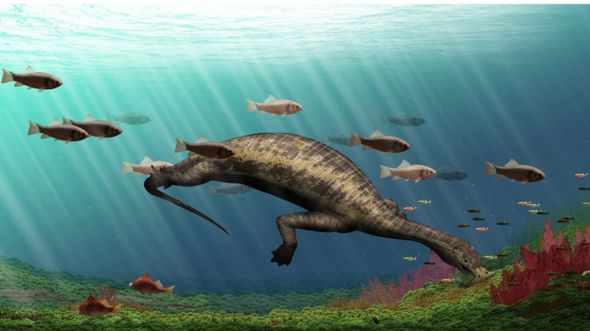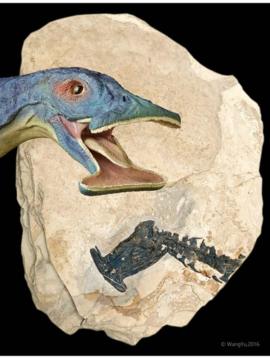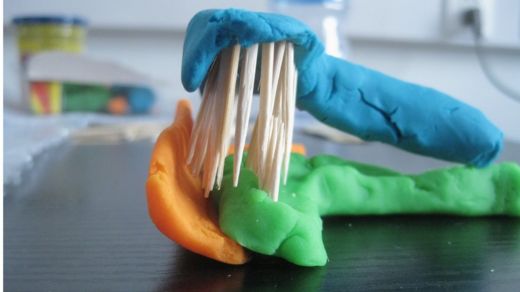 IVPP
IVPP
A crocodile-sized creature that lived 242 million years ago was the first known vegetarian marine reptile, according to new fossil evidence.
Two specimens unearthed in China reveal details of the animal's skull and how it fed.
Named Atopodentatus, scientists say its hammer-shaped skull helped it to feed on underwater plants.
Only a handful of marine reptiles, living or extinct, are known to be herbivores.
Dr Nick Fraser of National Museums Scotland, who worked on the fossil, said it belongs in the pages of a children's storybook by Dr Seuss, which depicts animals with a strange jumble of features.
The reptile was "a bizarre, bizarre animal", he explained.
"We envisage it scraping algae and the like off rocks underwater.
"Herbivorous marine reptiles are very rare - this is the oldest record that we know of."
Strangely toothed
The first fossils of the creature were discovered a few years ago.
It was named Atopodentatus unicus, which is Latin for "unique strangely toothed".
 Wang Yu, IVVP
Wang Yu, IVVP
New fossils unearthed in China's Yunnan Province by Chun Li of the Institute of Vertebrate Paleontology and Paleoanthropology in Beijing give a detailed picture of the animal's skull.
The discoveries, unveiled in the journal, Science Advances, show that rather than having a zipper-like snout as previously thought, the animal had a wide hammer-headed jaw filled with peg-like front teeth.
Play-Doh
Scientists used clay to make a model of the jaw to work out how the animal fed.
"To figure out how the jaw fit together and how the animal actually fed, we bought some children's clay, kind of like Play-Doh, and rebuilt it with toothpicks to represent the teeth," said co-researcher Olivier Rieppel of the Field Museum in Chicago.
"We looked at how the upper and lower jaw locked together, and that's how we proceeded and described it."
 Olivier Rieppel, Field Museum
Olivier Rieppel, Field Museum
He said Atopodentatus also helps tell a bigger story about the world's largest mass extinction 252 million years ago.
It lived at a time when the Earth was recovering from the loss of 90% of all marine animals.
"The existence of specialised animals like Atopodentatus unicus shows us that life recovered and diversified more quickly than previously thought," he said.
"And it's definitely a reptile that no one would have thought to exist - look at it, it's crazy!"
SOURCE: BBC SCIENCE
No comments:
Post a Comment